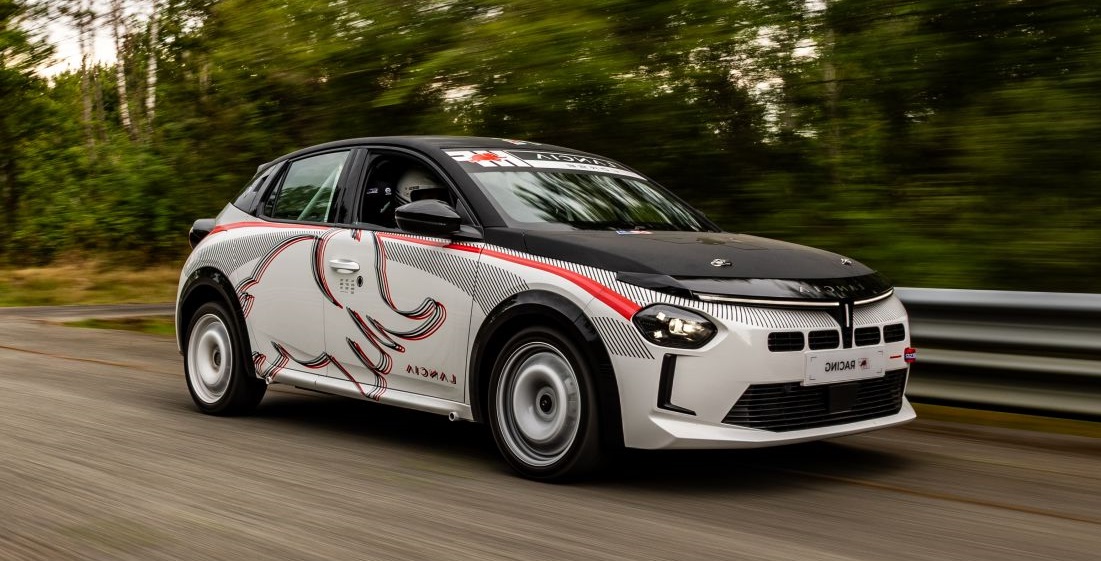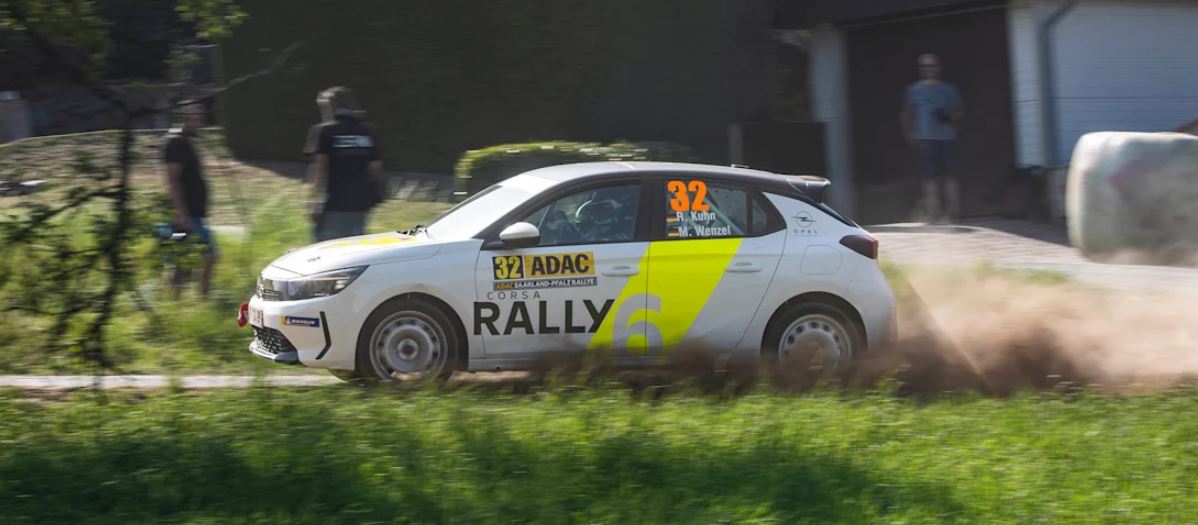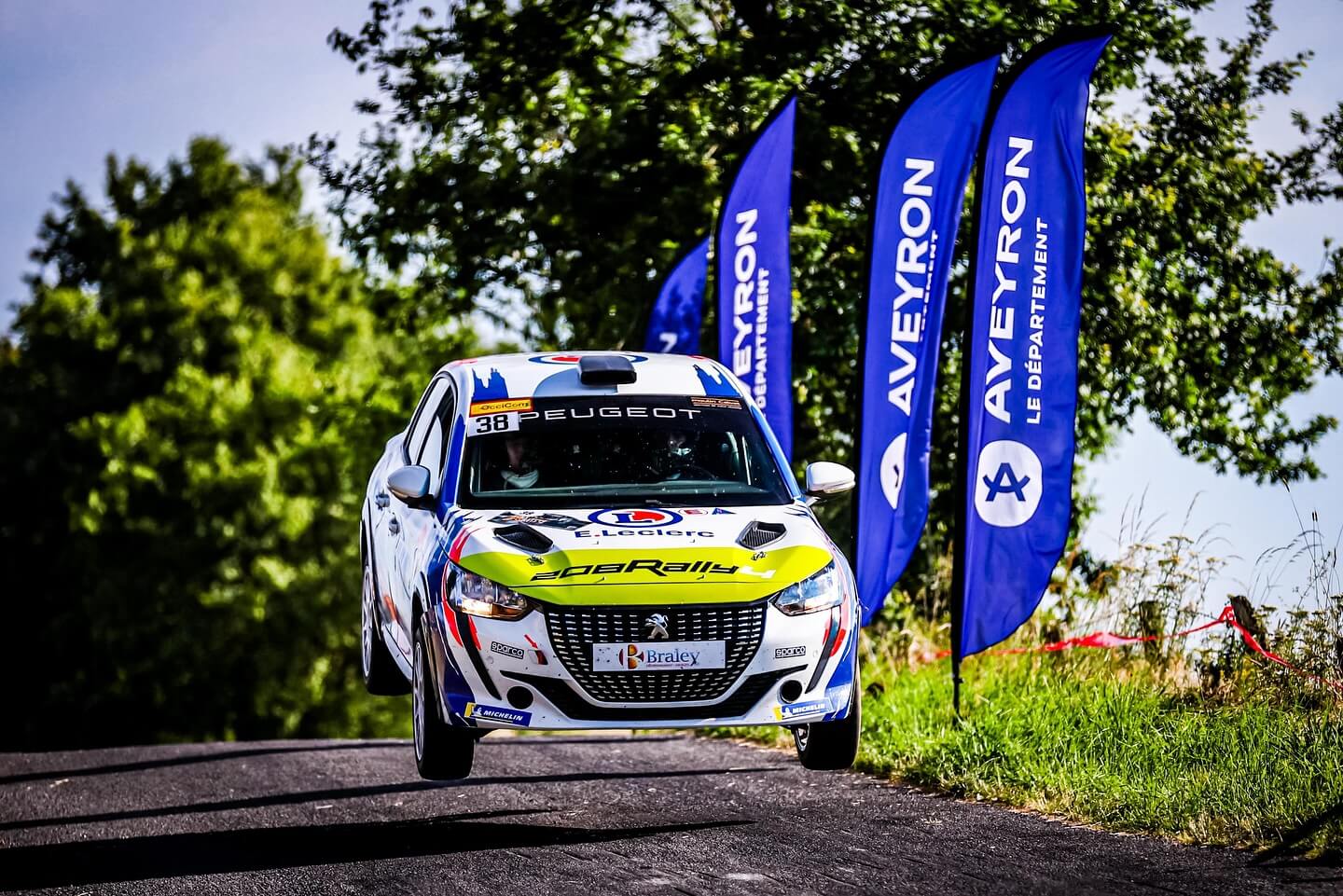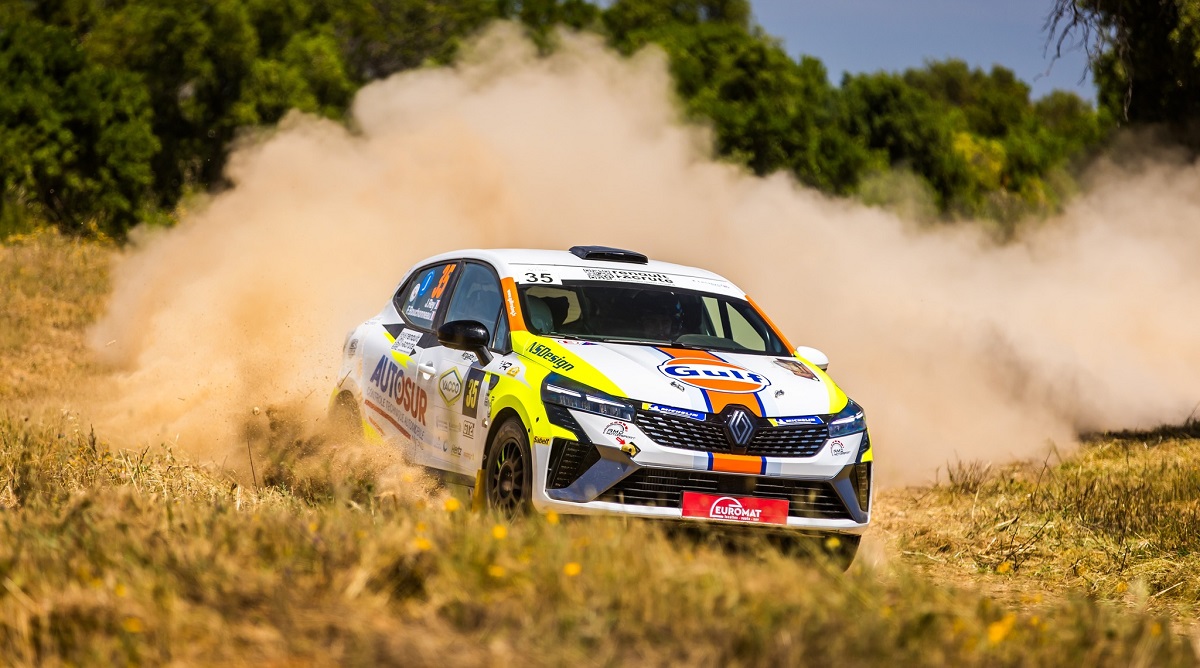Clio, Corsa, Ypsilon... Rally6 welcomes new cars
By RobinB on 15 July 2025 RallyRallying remains a demanding sport, especially financially. To make competition more accessible, the FFSA launched in 2025 a new group called F-RC6, along with the creation of the FR6 Trophy, integrated into the Coupe de France des Rallyes. The goal is clear: offer an affordable gateway into modern rallying, with mass-production-based cars, standard components (road tyres, OEM brakes), and a simplified technical regulation 👍
The Peugeot 208 Racing was the first car homologated in this category. Designed by Stellantis Motorsport, it remains the only eligible model for the FR6 Trophy for the 2025 season, with just over 30 cars built at the time of writing. Despite a relatively high purchase price, it quickly found its audience thanks to its simple design, advertised reliability, and running costs much lower than those of a Rally5 or Rally4 😋
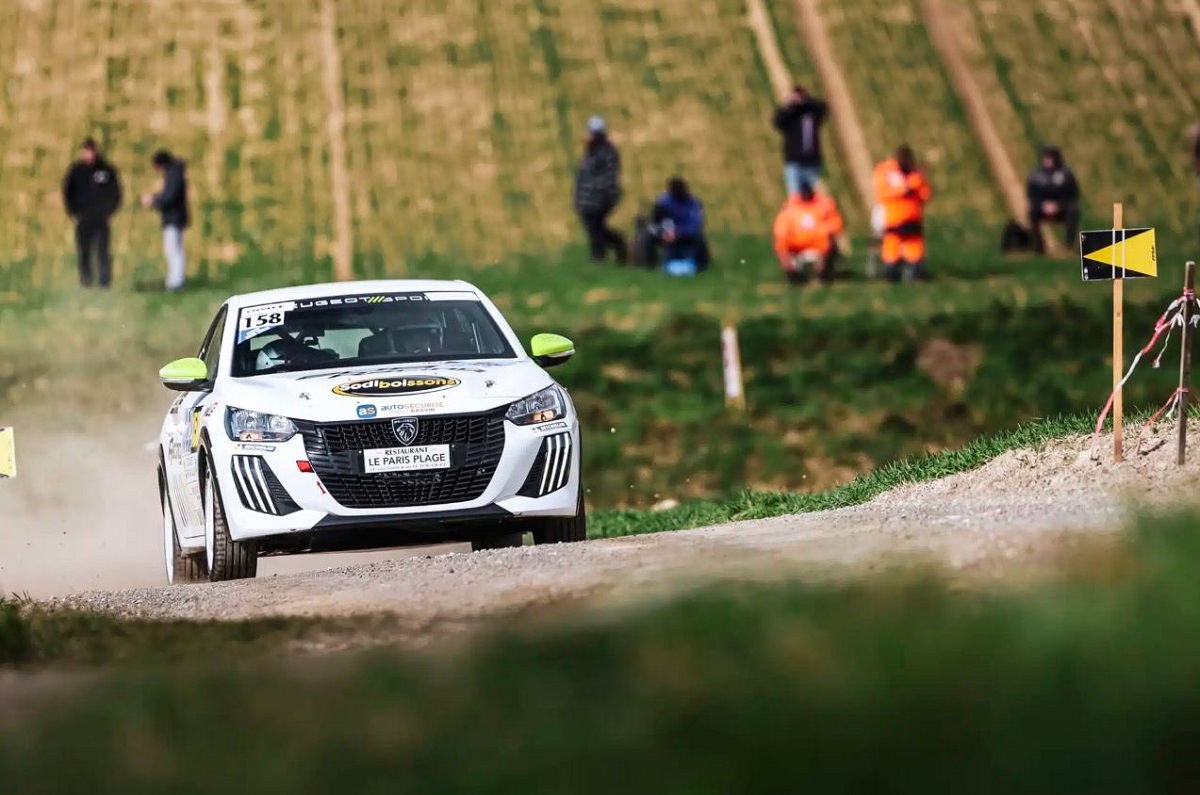
In recent months, the landscape has evolved. New Rally6-homologated models are appearing: Renault now offers a Clio Rally6, Opel has launched its Corsa, which debuted at the Rallye Vosges Grand Est, and Lancia just announced its comeback with the Ypsilon HF Racing. These cars share the same philosophy: simple layout, OEM parts, and above all, a limited budget.
The FR6 Trophy is currently reserved for the 208, but the regulations may evolve as early as 2026 to include these new cars, as this category is finally starting to grow. Let’s hope the list continues to expand in the coming months 🤞
ℹ️ For detailed information about the regulations, prizes and budgets, check out the article: FR6 FFSA Trophy: info and prices available on the blog 😉
Peugeot 208 Racing FR6: the Rally6 pioneer
The Peugeot 208 Racing is the first model homologated in the new FR6 category. Based on the production 208, it was developed by Stellantis Motorsport with the aim of offering a modern car that’s easy to maintain and inexpensive to run.
It retains its original body shell, reinforced with a welded multi-point roll cage similar to the one used on Rally4 cars. It is equipped with a reliable, proven powertrain: a 1.2-litre turbocharged 3-cylinder engine running on E85, mated to a 6-speed manual gearbox with a short-throw shifter. The suspension is modified for rally use, with specific components, but nothing overly complex to maintain.
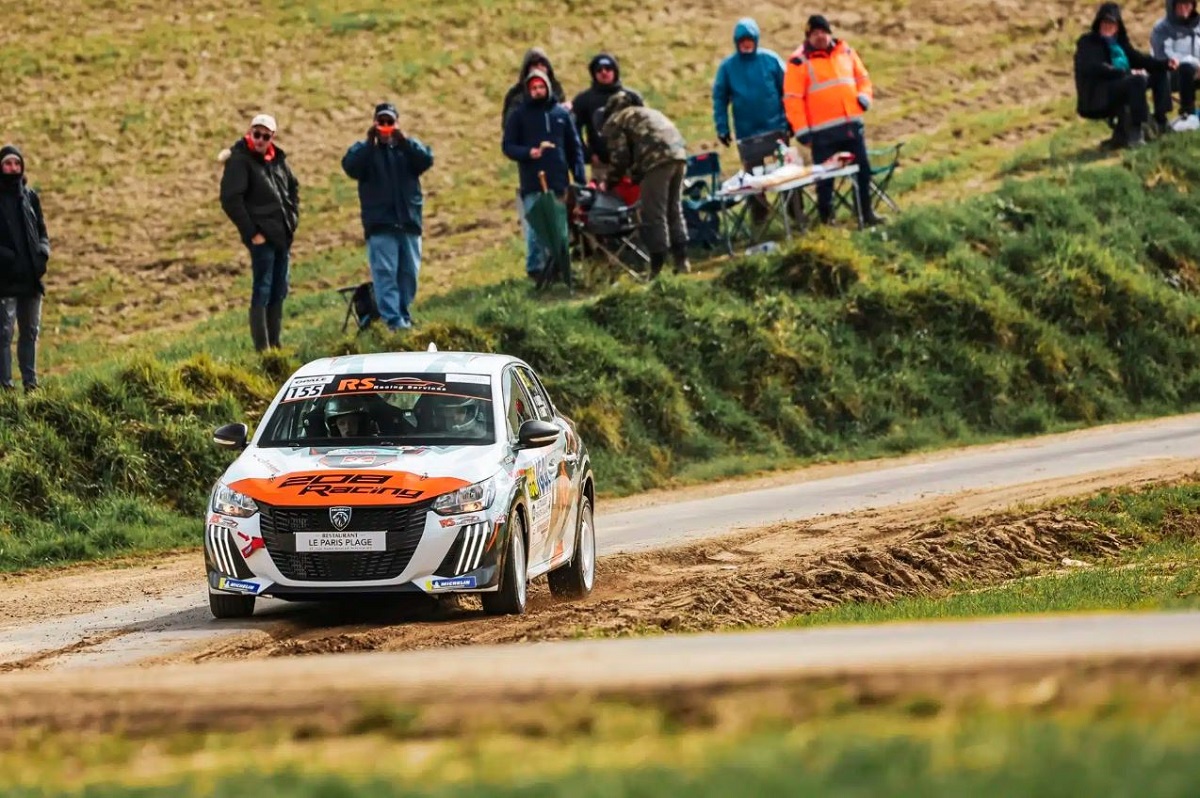
Peugeot 208 Racing (Rally6) – Technical specs
Inside, you’ll find a motorsport dashboard with anti-reflective panel, custom wiring loom and ECU, a configurable central display, automatic fire extinguisher, kill switch, and a dedicated centre console.
The new price is €38,900 ex. VAT (€46,680 incl. VAT). A significant price tag, but it includes a complete and race-ready car, designed to keep running costs low thanks to its OEM components. Initial orders were a real success, to the point that Peugeot faced strong demand and extended delivery times 🥵
➡️ Information and order form available on Peugeot Sport’s store (here)
The Clio Rally6: Renault’s alternative
Renault had no intention of letting Stellantis take the Rally6 segment alone. To complete its range, the manufacturer now offers a Clio Rally6, derived from the Clio Rally5 but designed to lower entry costs even further 👌
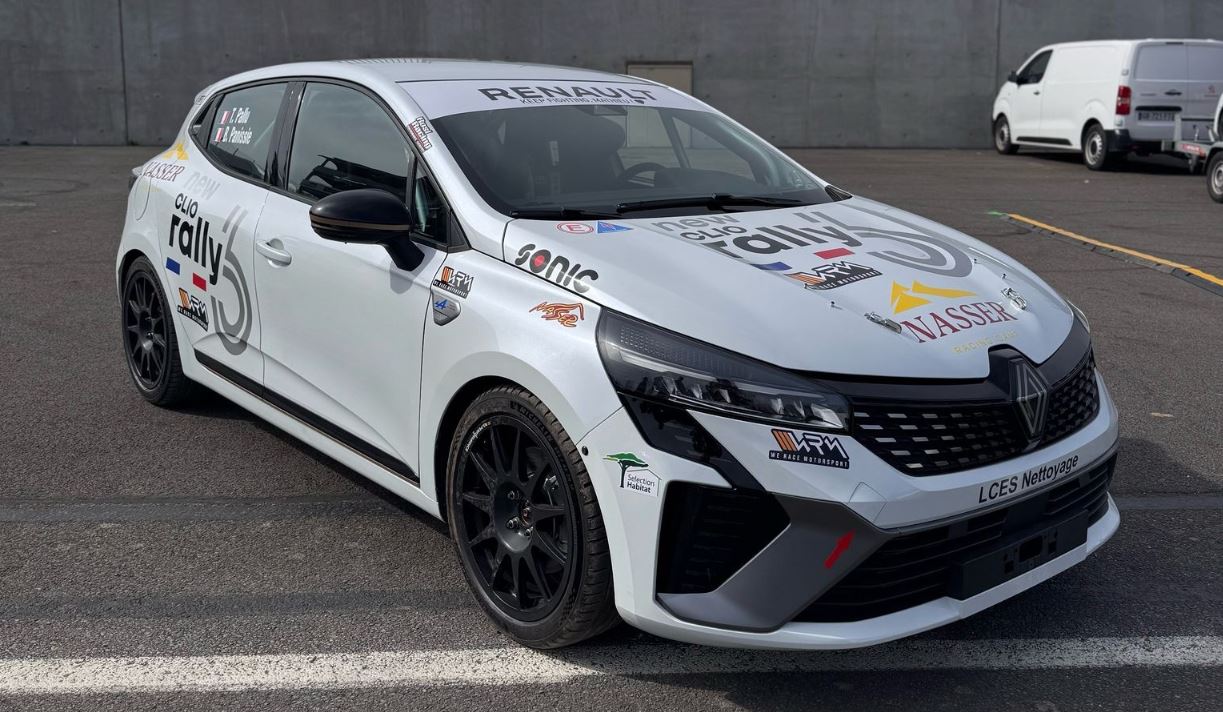
Unlike the Peugeot 208 Racing, this Clio is available as a kit, to be assembled yourself from a standard Clio V (1.3 TCe, 6-speed manual gearbox), including used models from 2021. The objective is clear: enable enthusiasts to build their own car on a limited budget, without going through an official workshop.
The complete kit is offered at €19,999 incl. VAT, to which must be added a used Clio estimated between €12,000 and €16,000 incl. VAT, depending on condition and year. You also need to plan for €2,640 incl. VAT for the roll cage—identical to the one used on the Clio Rally4 and Rally5—which must be installed by a certified fitter.
On paper, this brings the total to around €35,000 incl. VAT, but you’ll also need to include costs for paint, consumables, a full overhaul, and a few tweaks to actually prepare the car for rallying. In the end, based on these estimates, the total cost is similar to that of a new 208 Racing.
➡️ Information and contact for purchasing the Clio Rally6 kit on Renault’s website (here)
What’s different from the Rally5 ?
The Clio Rally6 reuses 95% of the Rally5’s components, including the chassis, dampers, brakes, and anti-roll bars. The main differences are:
- The transmission, which remains the original manual gearbox (instead of the sequential one),
- The handbrake, which is still mechanical (a hydraulic handbrake is forbidden in FR6),
- And the engine, slightly detuned.
It produces about 150 horsepower (vs. 180 for the Rally5) and 270 Nm of torque (vs. 300 Nm), with E85 compatibility, which required some specific adaptations.
The interior is almost identical to the Rally5, with the same dashboard and simplified electronics. The tyres, as required by the FR6 regulations, are standard road tyres.
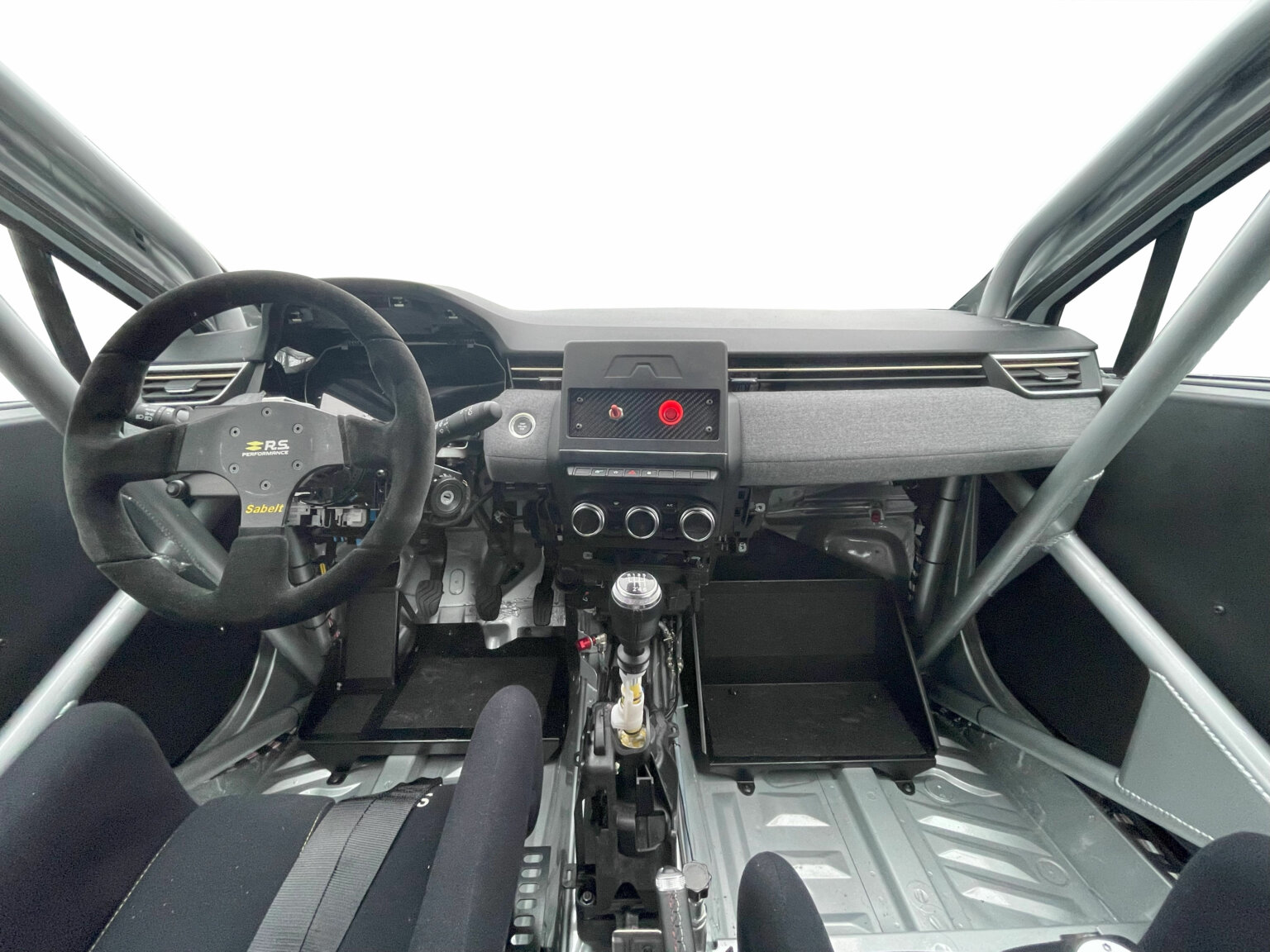
A car designed for enthusiasts
Renault clearly targets enthusiasts who want to build their car themselves, in their garage or with the help of friends. The Clio Rally6 is intended to be simple, affordable, and designed to keep cost per kilometre low. The initial feedback from the cars already used in rallies is quite encouraging 🙂
Renault hopes to see its Clio officially included in the FR6 Trophy as early as the 2026 season.
Also worth reading: "Dacia Sandero Eco Cup: the affordable one-make rally series in Spain"
Opel Corsa Rally6: the technical cousin of the 208
Unveiled during the Rallye Vosges Grand Est, the Opel Corsa Rally6 is almost entirely based on the technical platform of the Peugeot 208 Racing FR6. It was designed according to the same Rally6 specifications defined by Stellantis Motorsport.
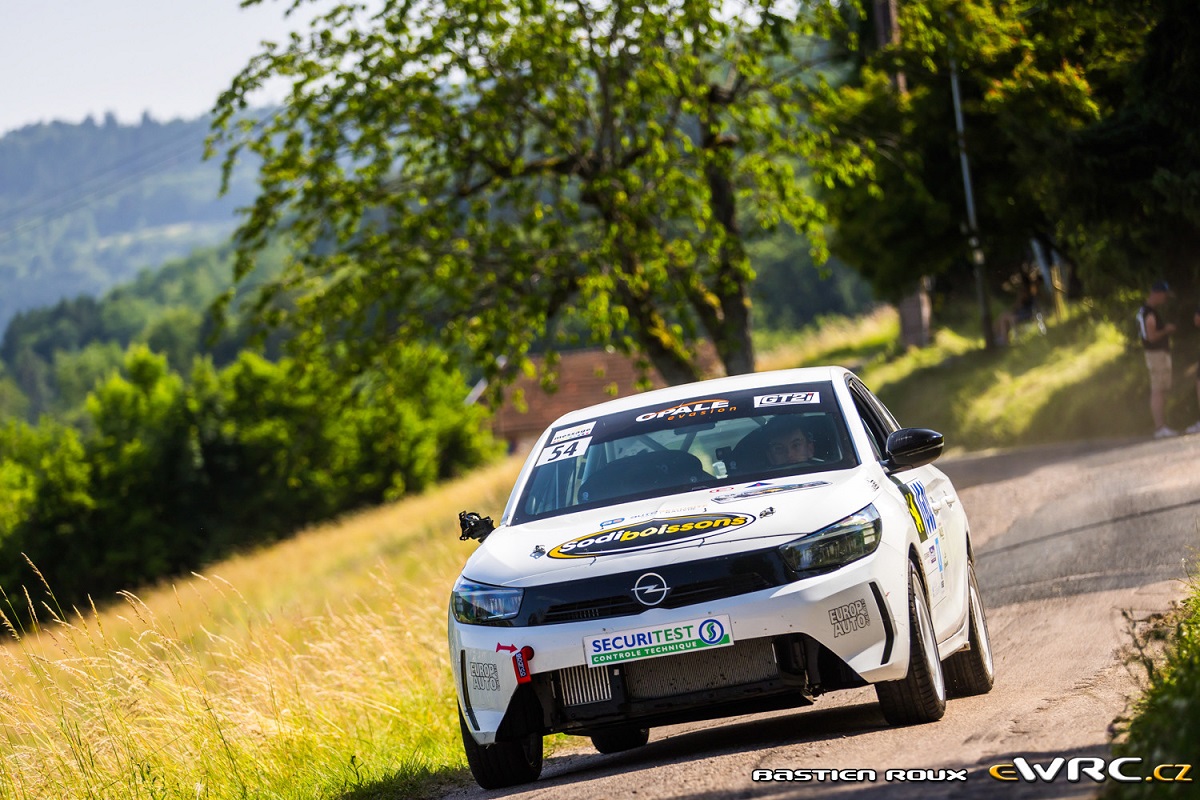
Under the hood is the 1.2-litre turbo PureTech engine, E85 compatible, producing 145 horsepower, paired with a 6-speed manual gearbox. In terms of safety and handling, the Corsa uses the same multi-point roll cage, the same suspension setup, and the same onboard electronics as the 208 Racing.
The only difference is the bodywork, with a sharper Opel design, but everything else — suspension, brakes, wheels, tyres — is identical. The price is also aligned with the Peugeot, at €38,900 ex. VAT for a race-ready car.
With this version, Opel strengthens the Rally6 offering within the Stellantis group, by offering a technically identical alternative with a different look to appeal to a wider audience.
Also worth reading: "ADAC Rally Junior Cup: Germany launches its Rally6 cup with the Opel Corsa"
Lancia Ypsilon HF Rally6: Lancia’s new entry-level option
After officially announcing its return to motorsport with the Ypsilon Rally4 HF at the end of 2024, Lancia is expanding its range with a more accessible Rally6-homologated version 🎉
This is probably the most unexpected car homologated in this new category. With the Ypsilon HF Racing, Lancia offers a true entry point for beginner drivers, following the same philosophy as its cousins, the 208 and Corsa.
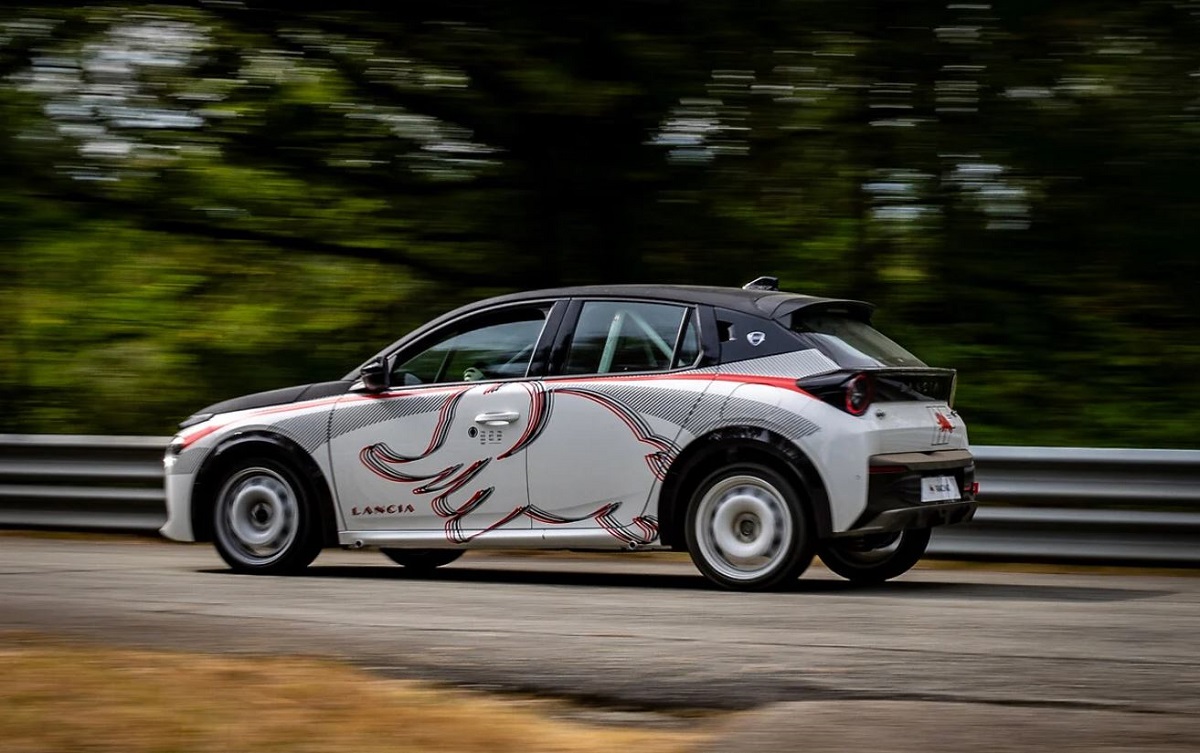
The Lancia shares its technical platform with the 208 Racing. It features the same 1.2-litre 3-cylinder turbo engine producing 145 horsepower and 240 Nm of torque, combined with a 6-speed short-ratio manual gearbox and a mechanical differential. The chassis, roll cage, suspension and cockpit are directly derived from the Rally4 HF version, offering a solid and reassuring base for learning.
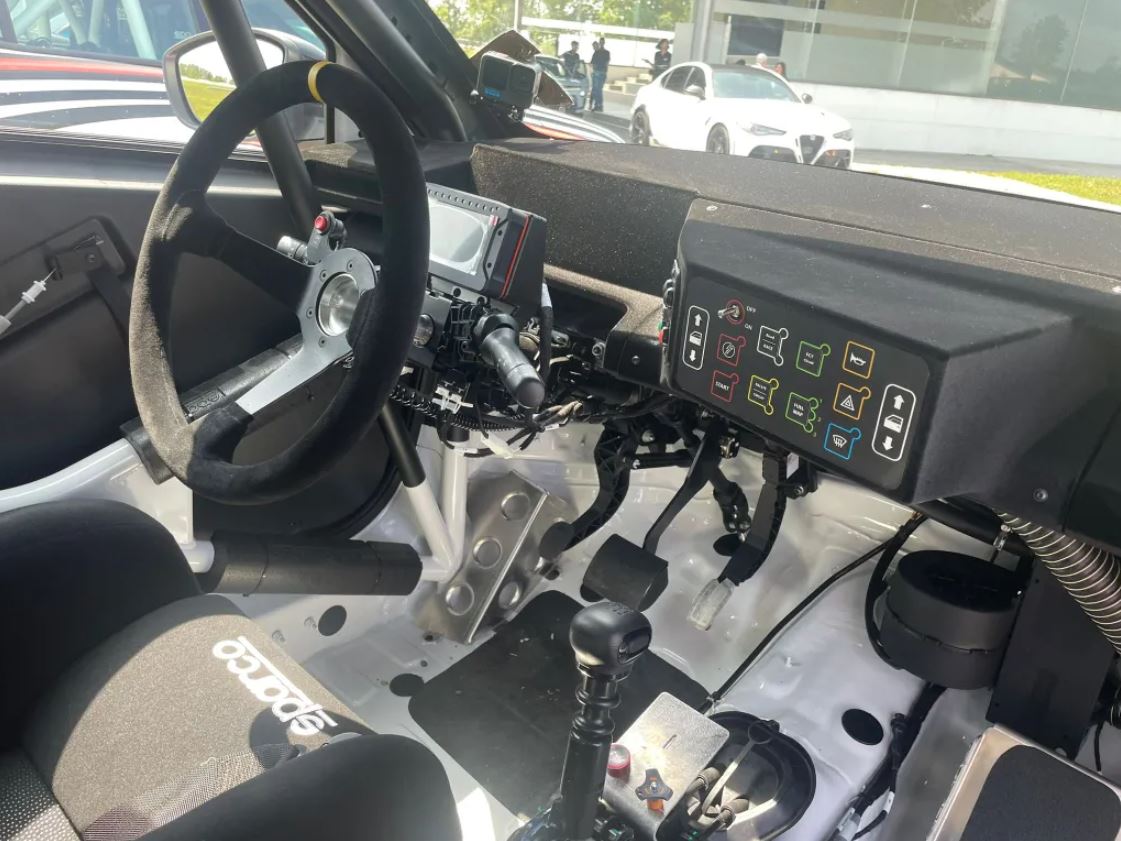
On the braking side, Lancia even opted for slightly larger rear discs than its Stellantis siblings: 302 mm at the front and 290 mm at the rear, with a mechanical handbrake to comply with FR6 regulations.
Launched at €38,900 ex. VAT, the same price as the 208 Racing and the Corsa, this Ypsilon HF Racing is already available to order via the Stellantis Motorsport Racing Shop, with deliveries expected after summer 2025.
In addition to its solid technical spec sheet, Lancia plays on heritage with the return of the HF badge and a storytelling strategy clearly focused on nostalgia and training values. The announced goal: to offer a modern, high-performing but accessible car to open rallying up to a new generation of drivers.
Rally6 trophies already in place… and more to come
In France, the competitive structure around Rally6 cars is beginning to take shape.
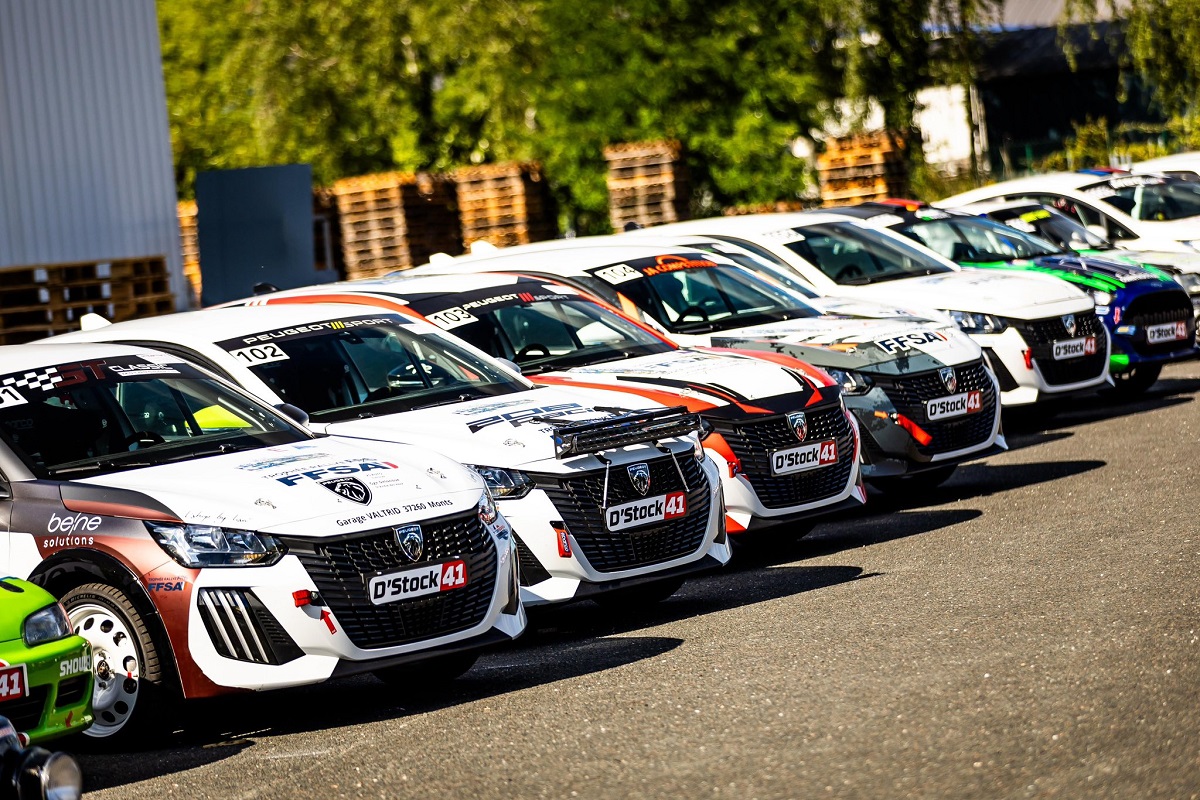
- The FR6 FFSA Trophy was officially launched in 2025, as part of the Coupe de France des Rallyes. It is currently reserved for the Peugeot 208 Racing, but the FFSA plans to open the category to other homologated models starting in 2026 (👉 Explanatory video about the FR6 Trophy)
- At the same time, Stellantis is organizing the SMRC6 (Stellantis Motorsport Rally Cup 6), a cup dedicated to the 208 Racing with several national rounds, alongside the SMRC4 reserved for Rally4 cars. It’s a more compact format focused on training and support for young drivers.
Also read: "SMRC4 and SMRC6 – New developments for the Stellantis Cup!"
In Italy, no dedicated trophy for the Ypsilon HF Rally6 has been officially announced yet. For now, the brand is betting on the Trofeo Lancia built around the Rally4 HF version. However, the launch of the Rally6 fits into a broader strategy to expand Lancia’s customer racing program, and amateur-level development can’t be ruled out in the short or medium term.
What’s the budget to race in Rally6?
Even though the initial investment remains significant, Rally6 cars really make sense in terms of running costs. Tyres, fuel, maintenance… everything is designed to reduce the cost per kilometre 👍
For an owner, factoring in entry fees, tyre wear, E85 fuel, travel and consumables, the cost per rally is between €1,500 and €2,000. A reasonable figure for running a modern and well-equipped rally car.
For rental, the price jumps to between €3,500 and €5,000 depending on the provider, the type of event and the included services. It’s still an attractive option to discover the discipline without buying a car, or simply to race occasionally without managing logistics.
My thoughts on these new Rally6 cars
I think this evolution is quite positive. The Rally6 category is finally taking shape with several manufacturers involved, clear trophy structures and modern cars. The downside remains the new car price, which will often exceed €45,000 incl. VAT, representing a significant investment for amateur drivers, often young.
Also worth reading: "Getting started in rallying : Buying your first race car"
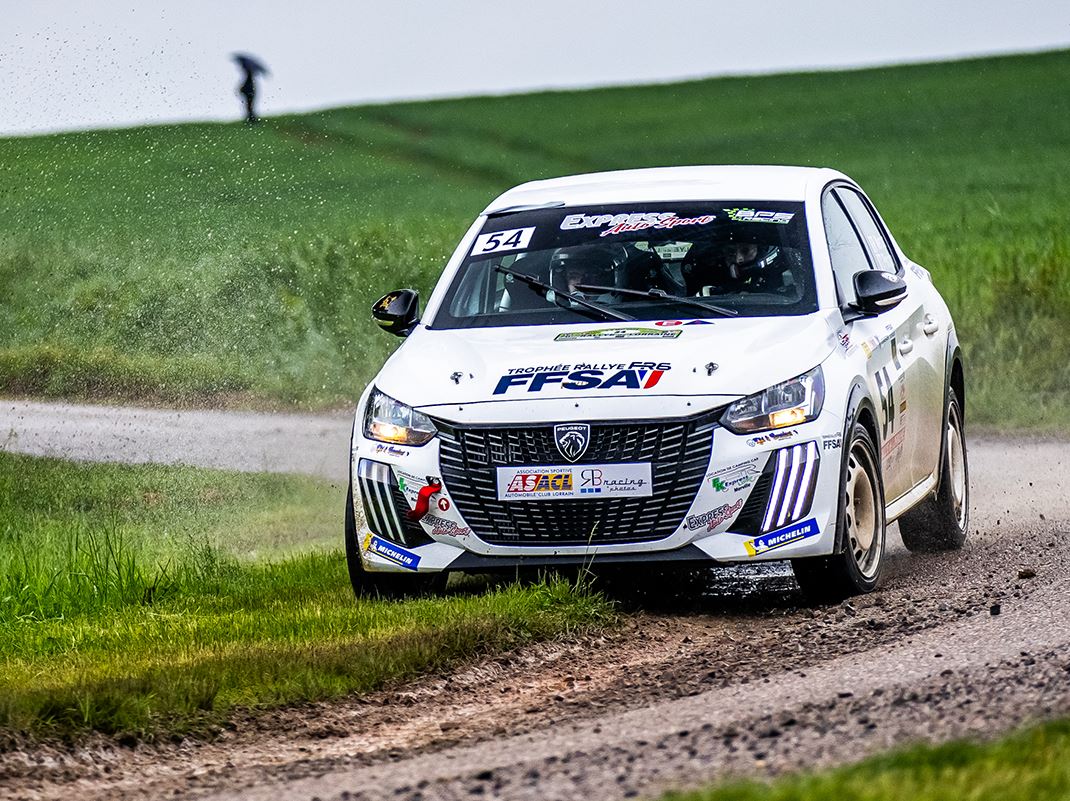
But with some perspective, this pricing isn’t out of line with today’s market. Nowadays, a well-equipped city car often exceeds €25,000, and once you add a Rally4-style roll cage, FIA-approved seats and harnesses, a custom wiring loom, automatic fire extinguisher, upgraded suspension, etc., you quickly reach a high budget. It’s hard to make a cheaper, new, homologated, safe, rally-ready car 🤔
The concept works: simple cars, low running costs, promising reliability, and a clear focus on support. In my view, success will depend on organizers’ ability to make the trophies attractive, and on rental teams offering affordable packages. Stellantis and Renault must also provide proper technical support and good spare parts availability—otherwise, interest will drop quickly.
By comparison, a used R1 or a good N2 is still much cheaper to buy, but these cars are aging, harder to maintain, and don’t offer the same development opportunities. Rally6 doesn’t replace everything, but it offers a truly modern and well-structured way to seriously get started.
➡️ Looking to buy or rent a car? Check out the rally car listings on GoToTheGrid 😉
Heading toward a real revival of entry-level rally formats?
Rally6 isn’t the low-cost revolution some were hoping for, but it does represent a major turning point in renewing the entry-level rally car fleet. By offering cars that are more modern, safer, and easier to run, the category meets a real demand from the field, and feedback from drivers who’ve already raced them seems to back that up 😎
The coming seasons will be crucial to assess the true appeal of these cars and their ability to win over both amateur drivers and rental outfits. If the FFSA, Stellantis and Renault manage to keep running costs down and keep the trophies lively and engaging, the formula could establish itself as the new standard for getting started in modern rallying, much like the Challenge N2 Série, the Trophée Twingo R1 or the Opel Adam Cup did in their time.

